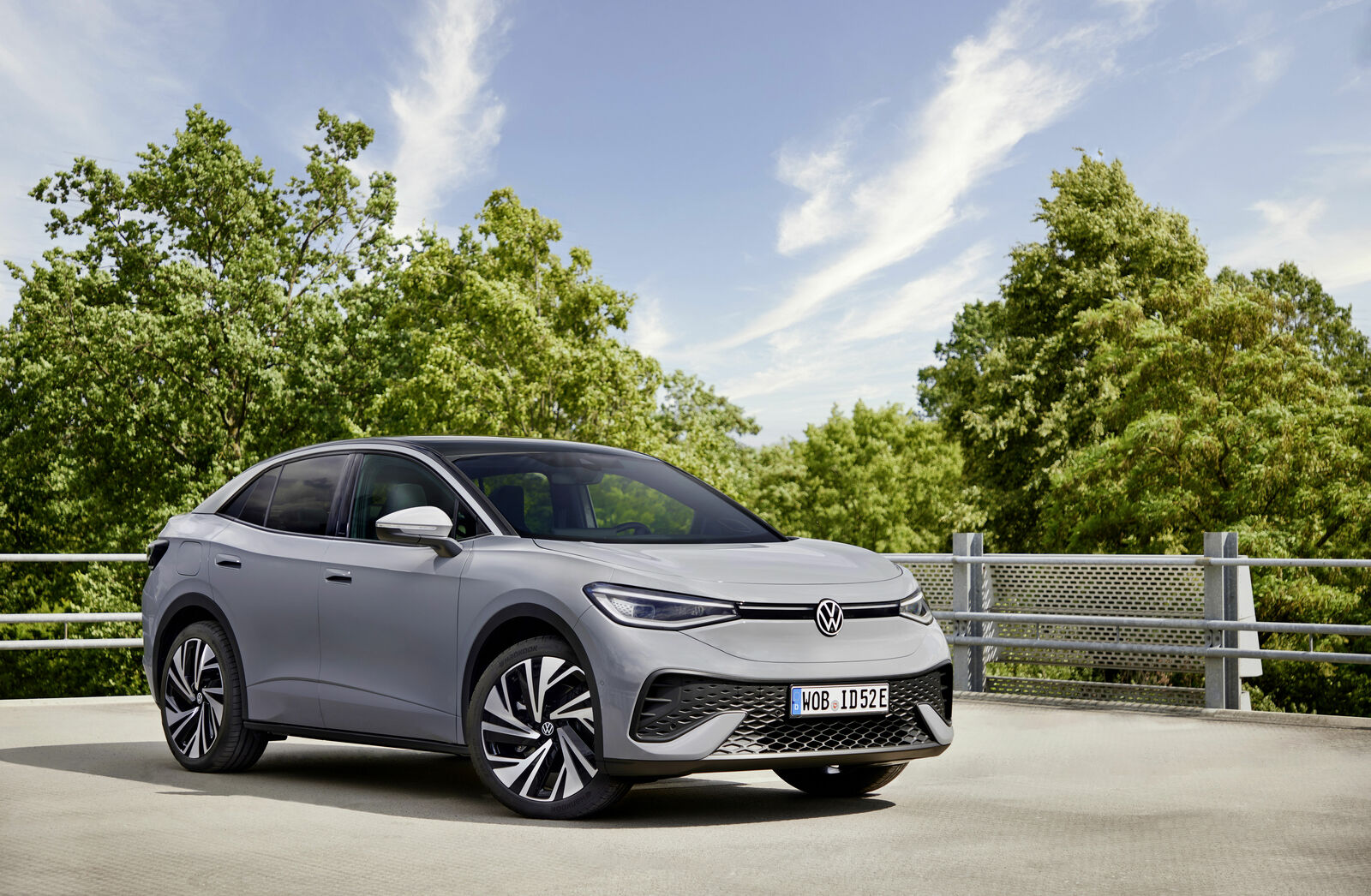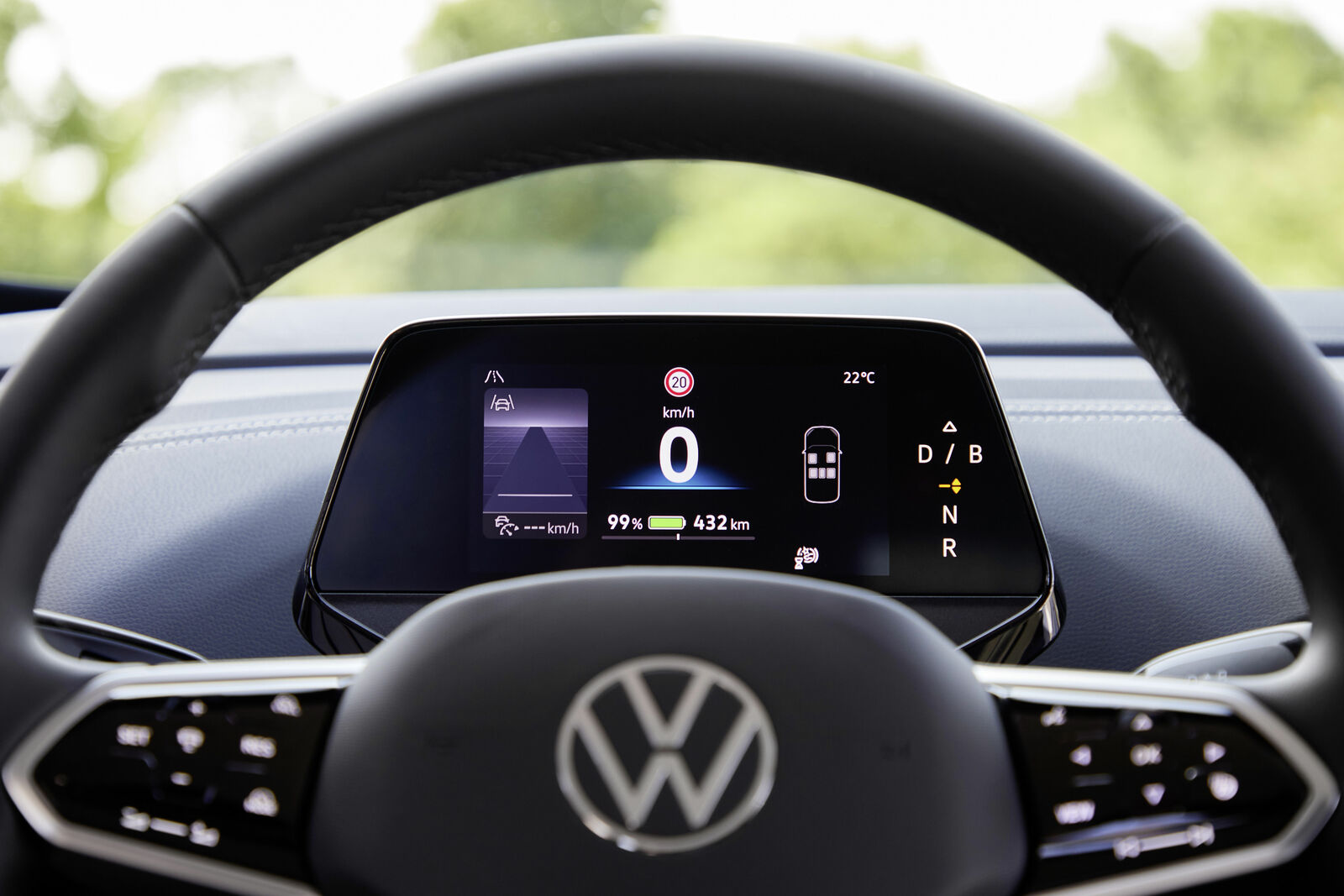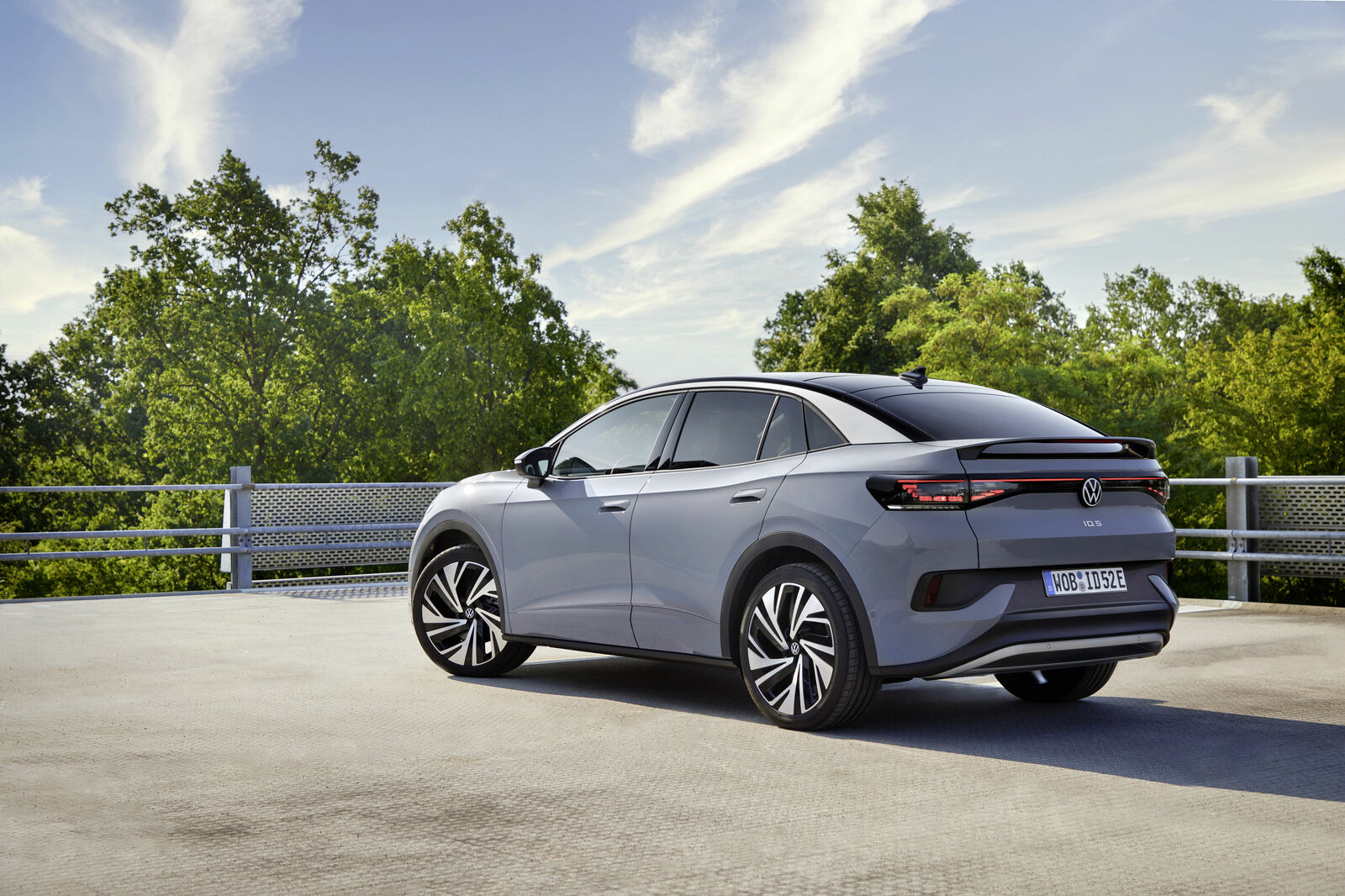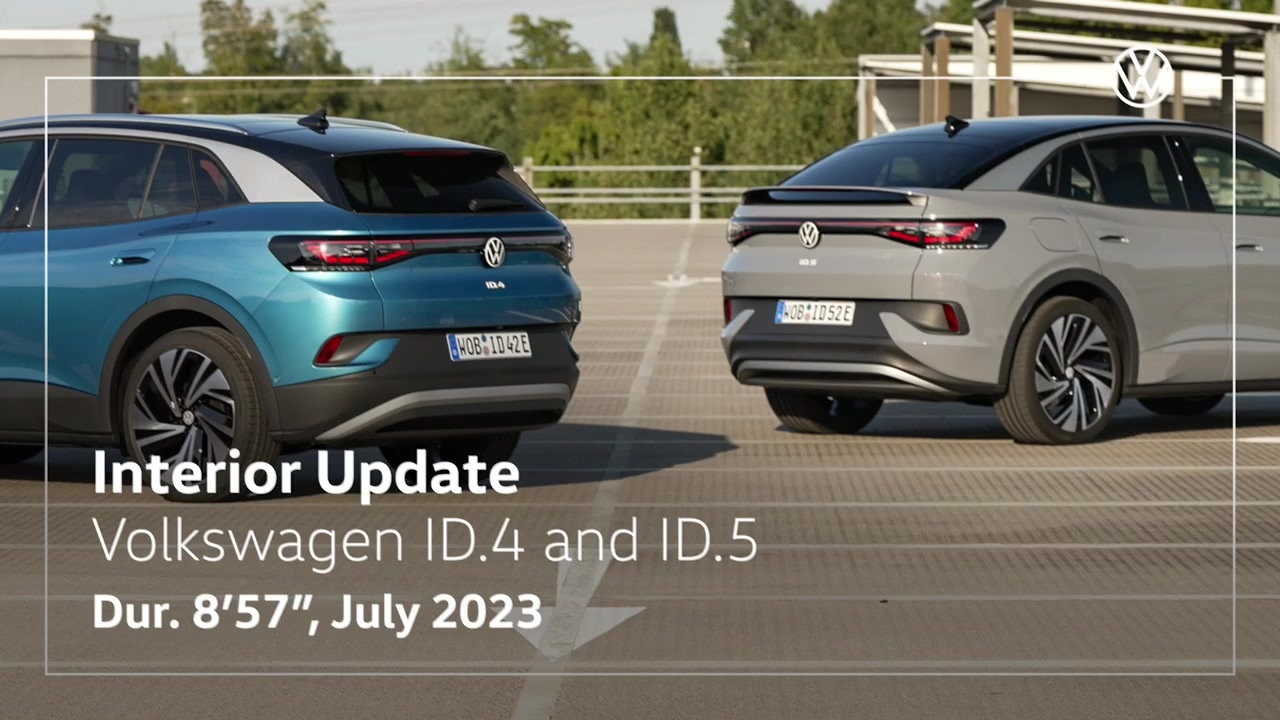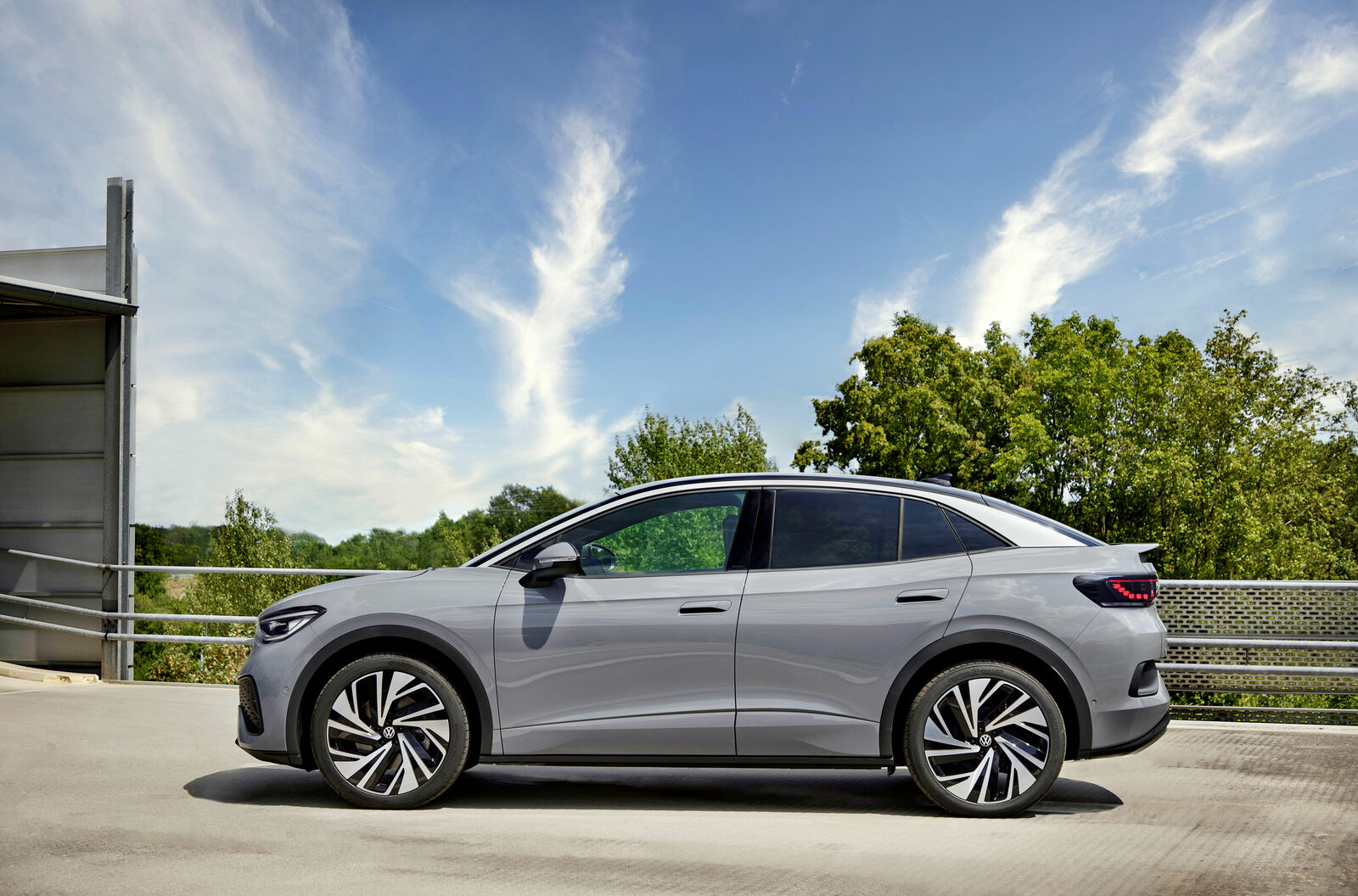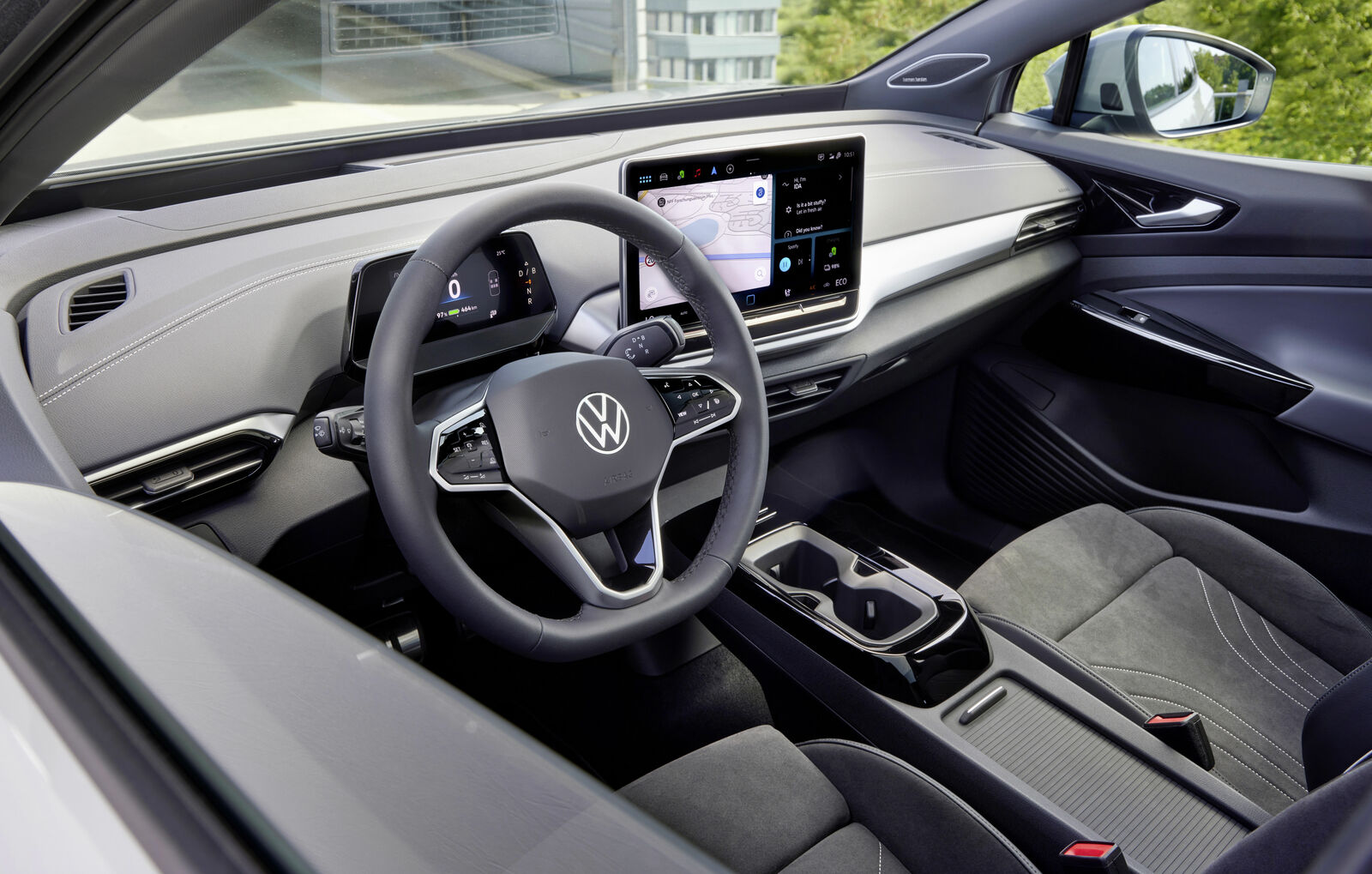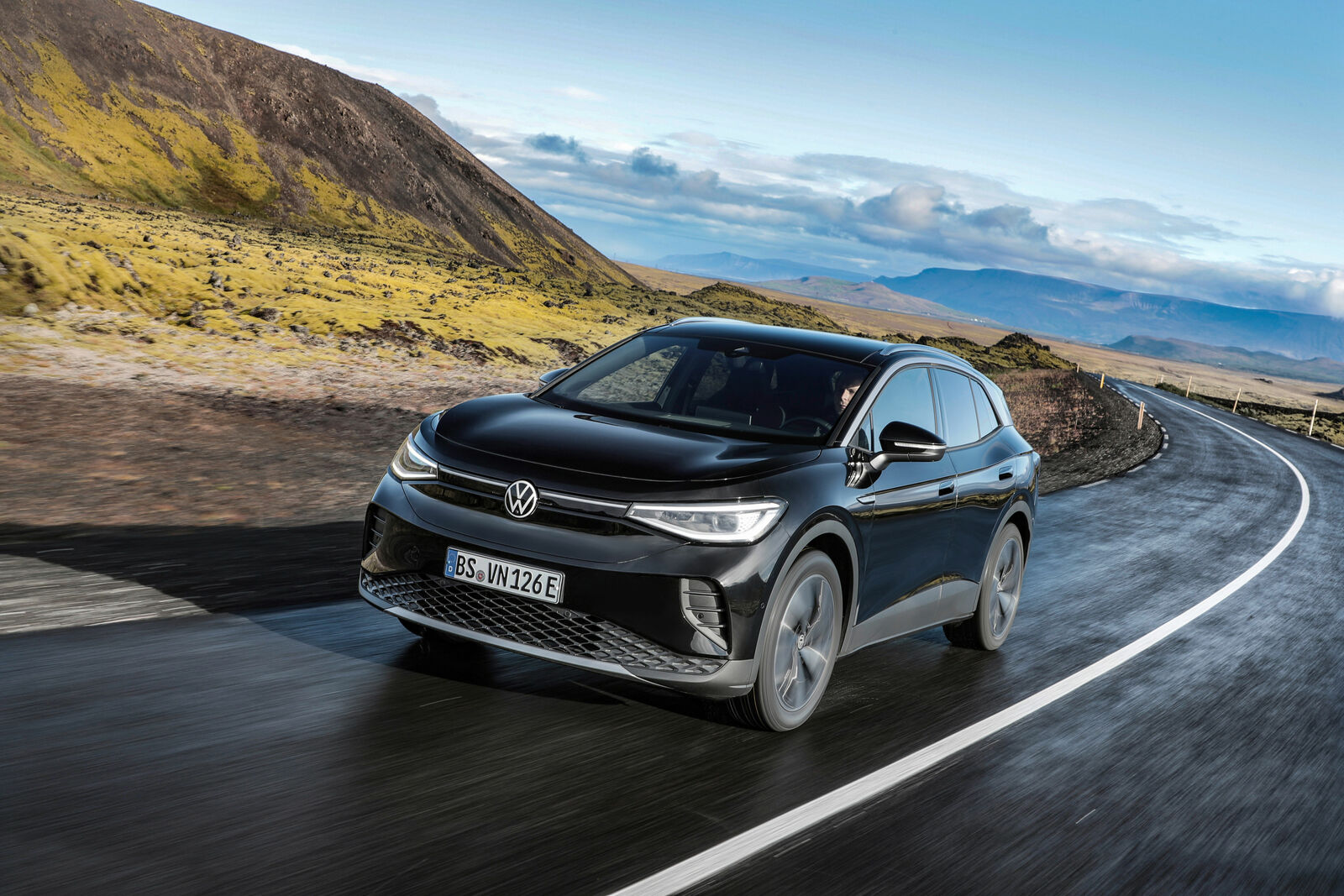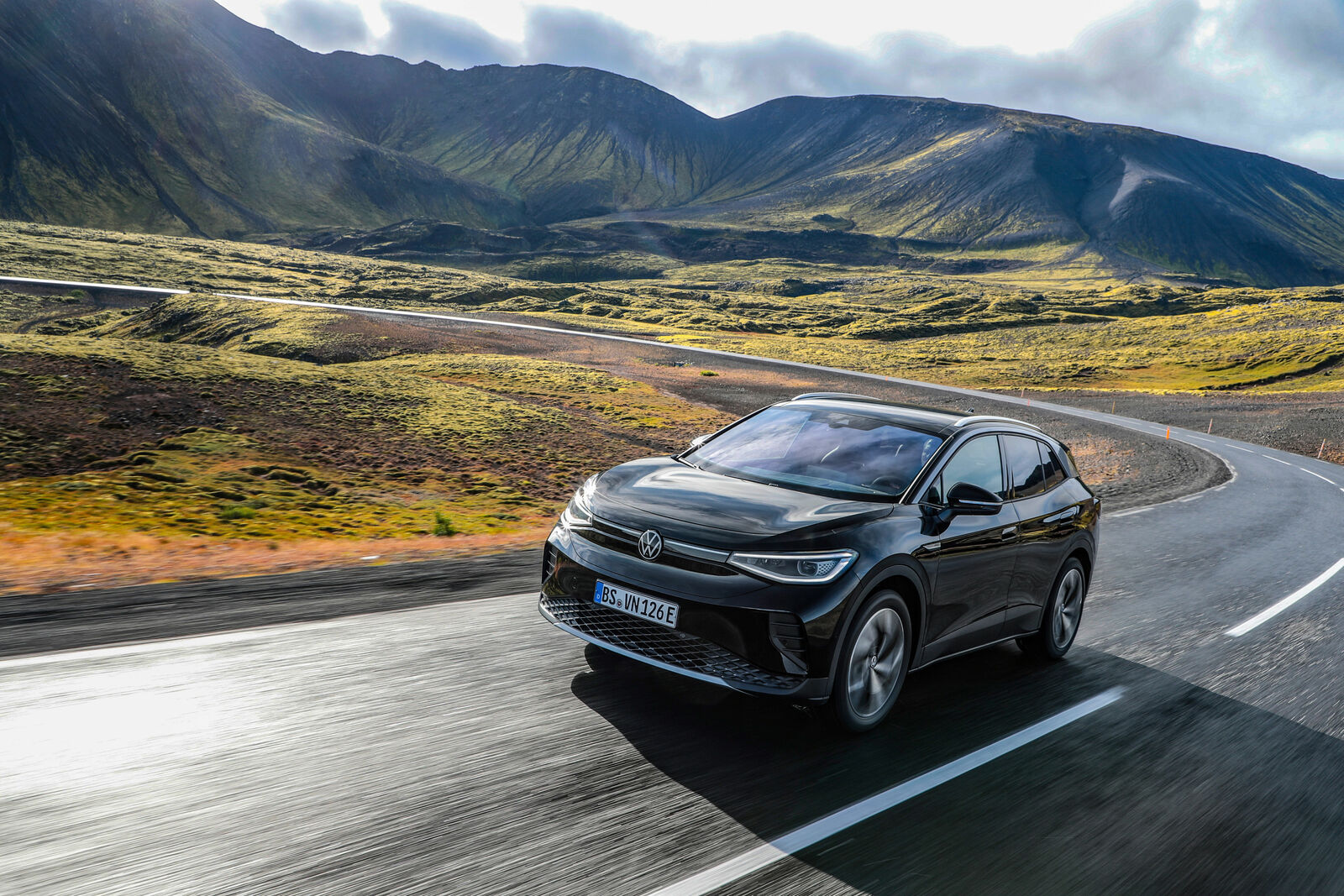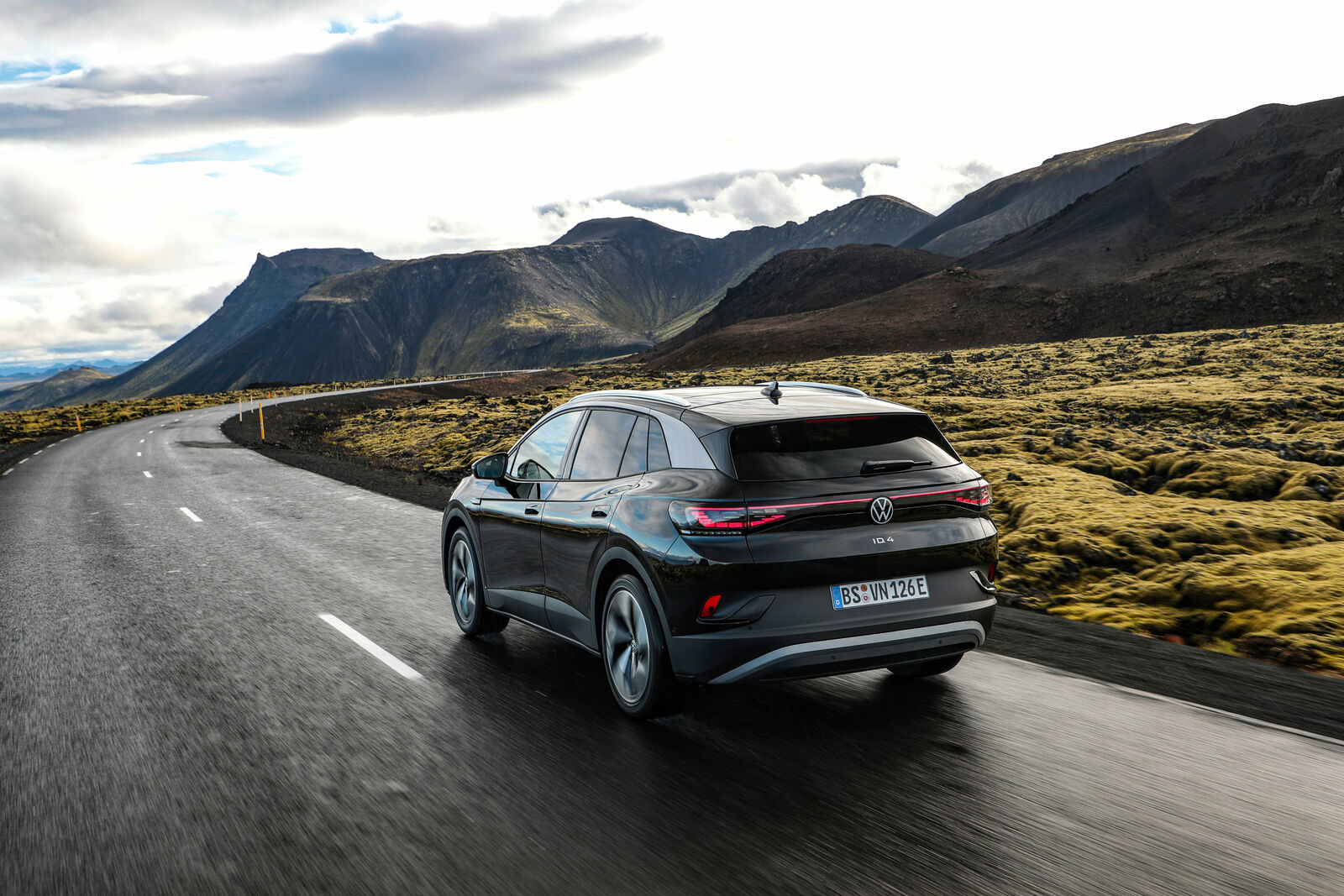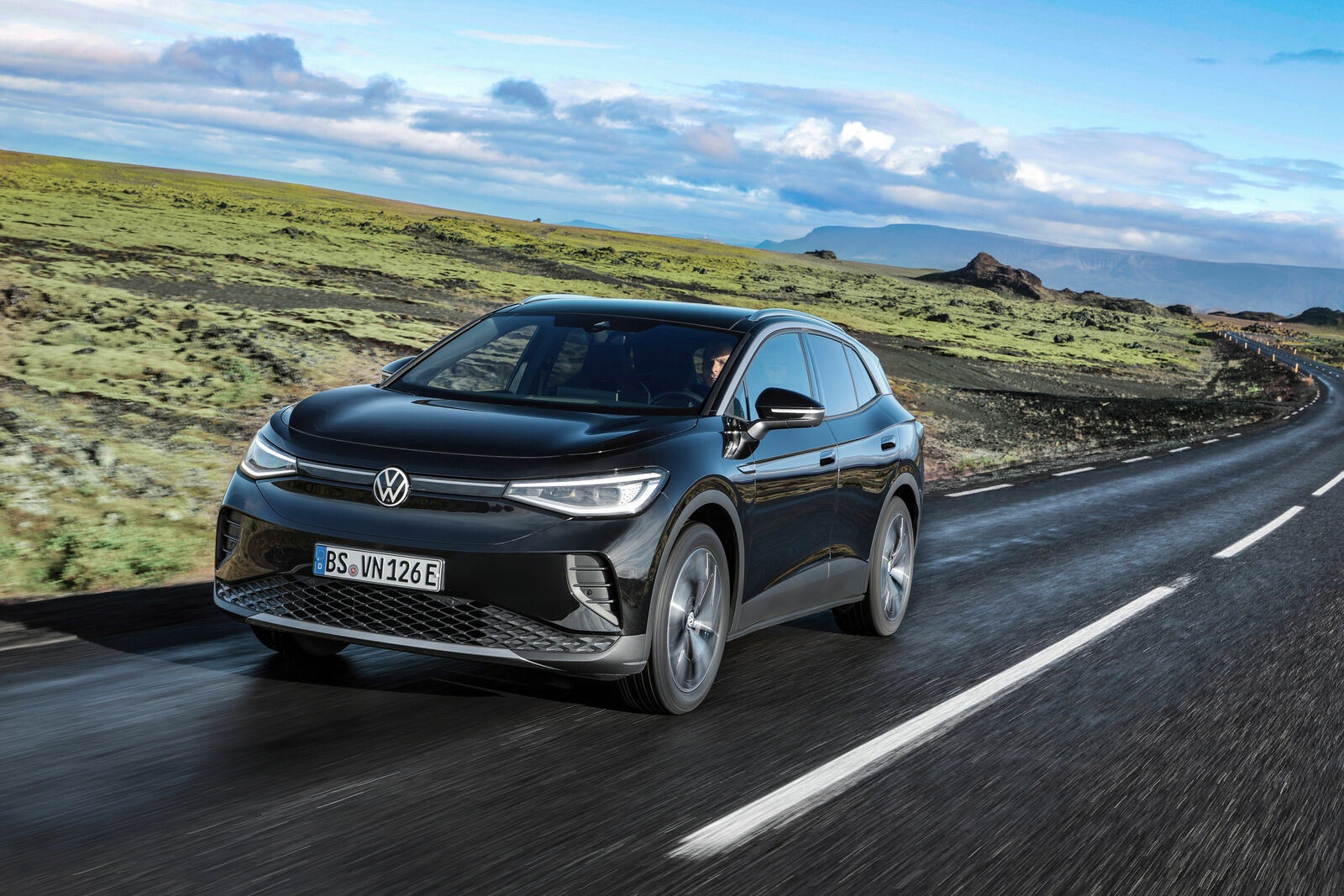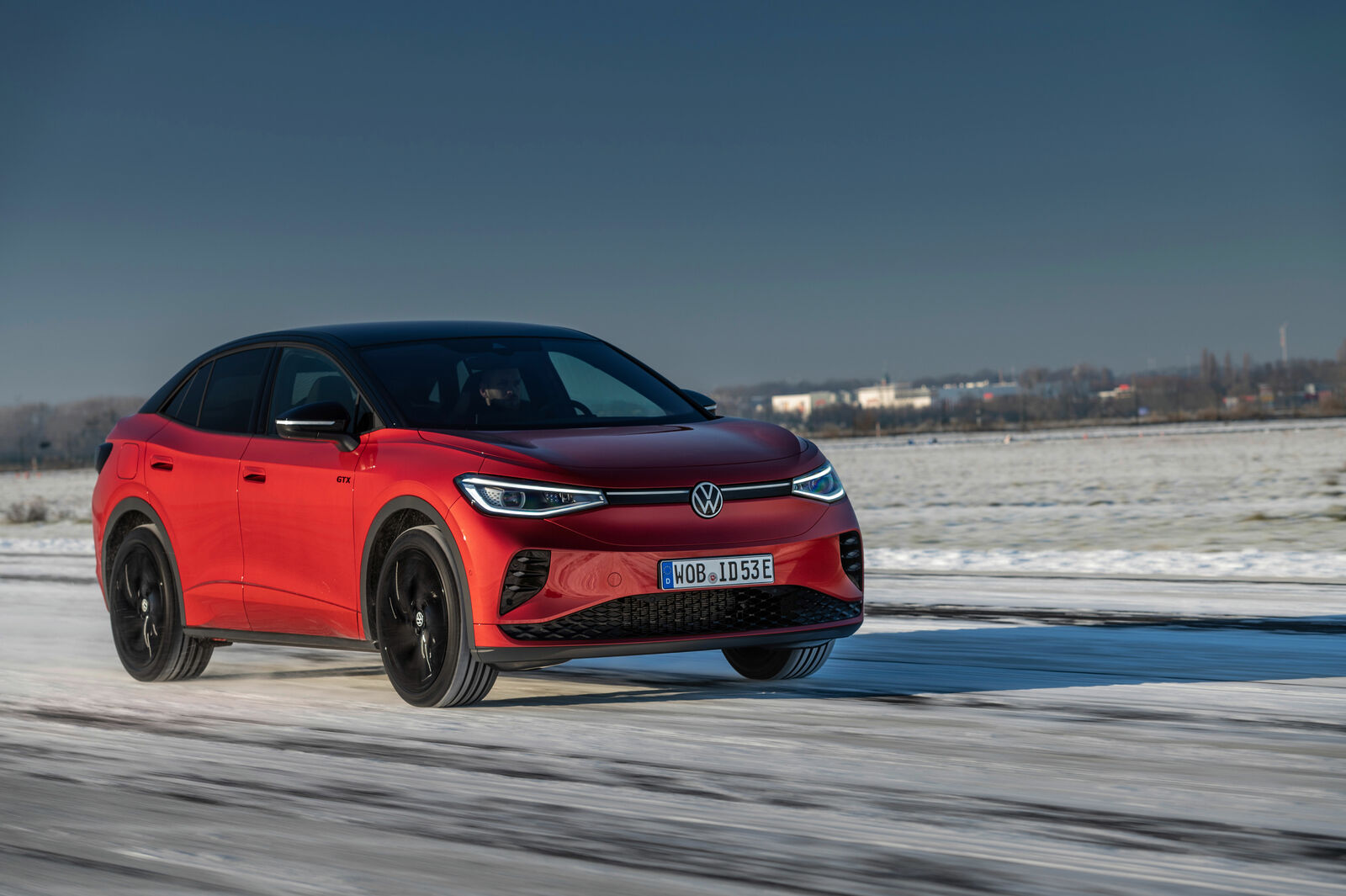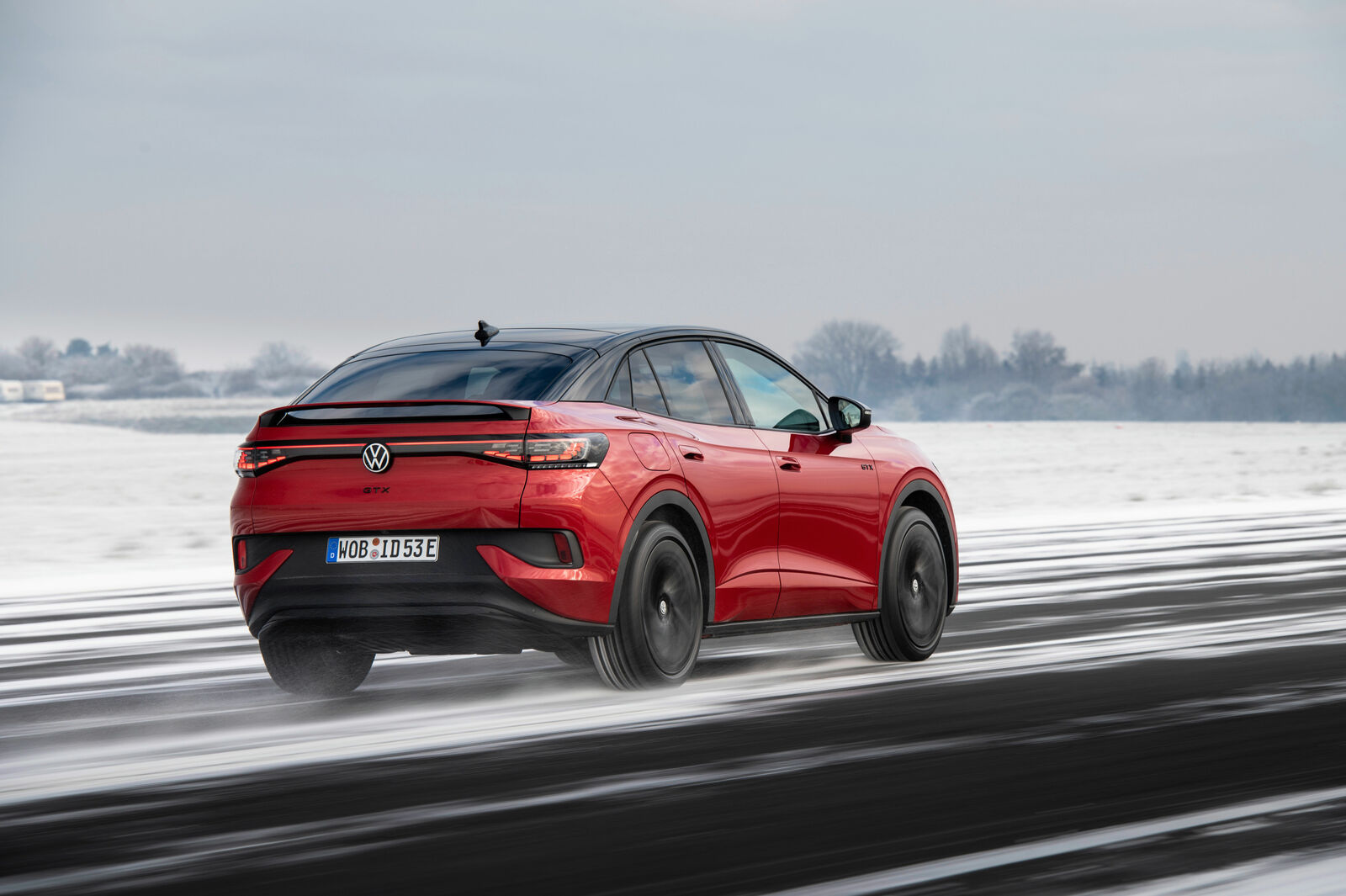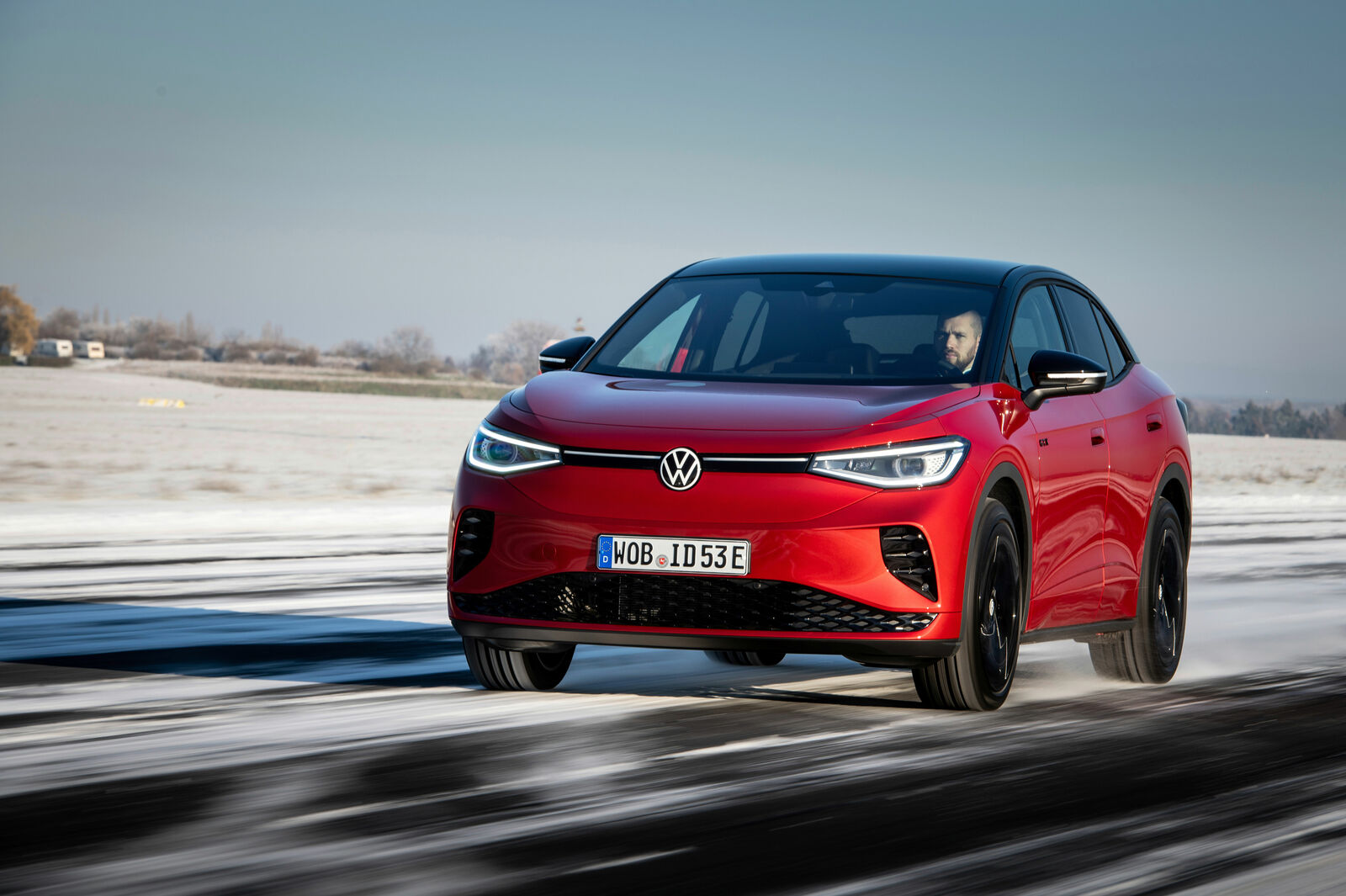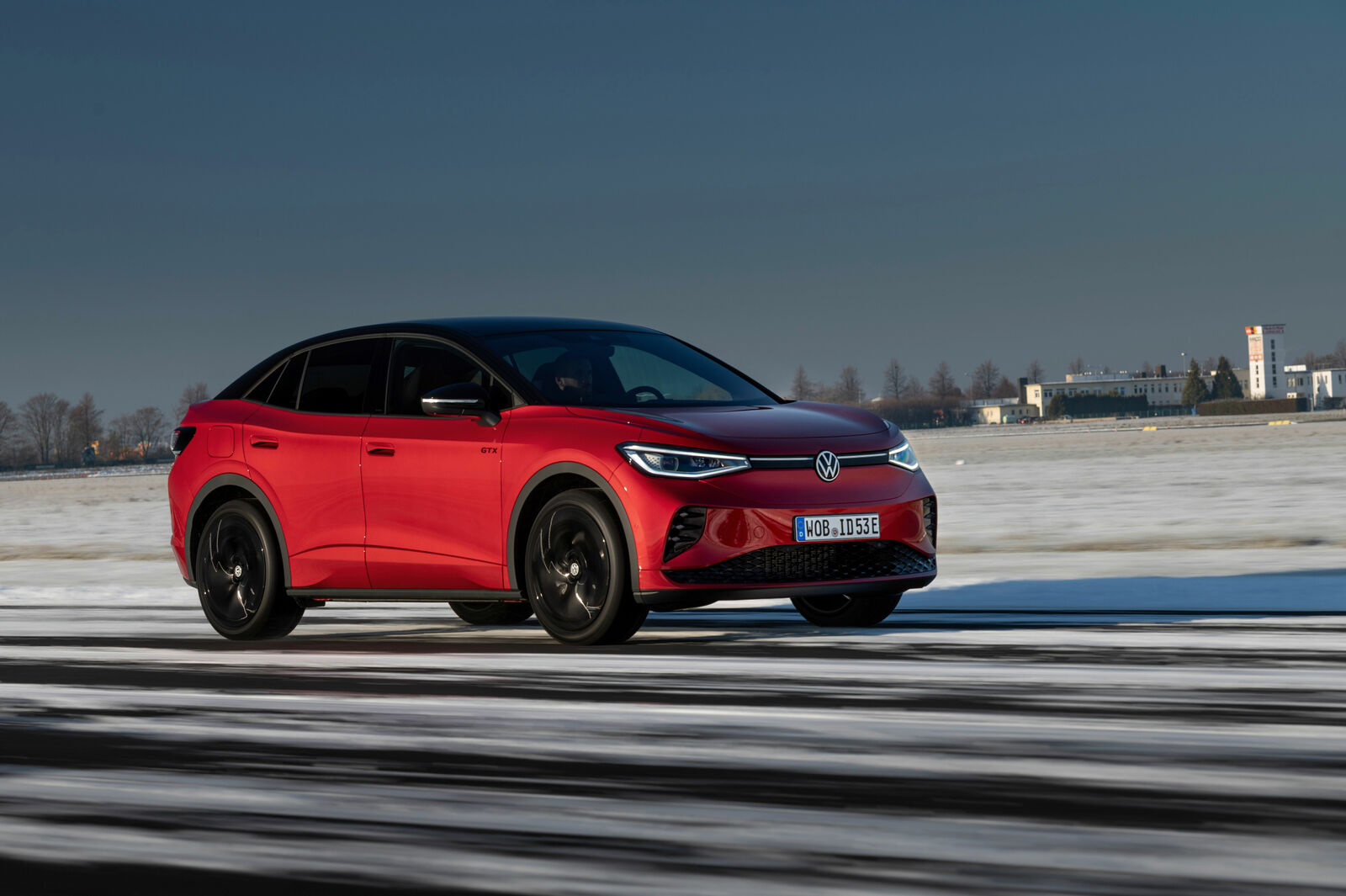All the details at the start of presales
The new ID.4 and ID.5
Major upgrade for the ID.4 and ID.5:
new, intuitively operated infotainment system, new electric drive with more power and range
- More power, longer range: powerful and economical electric drive with 210 kW (286 PS) and 250 kW (340 PS) Up to 556 km WLTP range
- New display and operating concept: next infotainment system generation and latest AR head-up display are the technical bridge to the ID.7
- Faster charging: the new DC charging capacity of up to 175 kW and thermally pre-conditioned battery further reduce charging times
- Travel more confidently: the Intelligent Electric Vehicle Route Planner starts DC pre-conditioning automatically, ensuring short charging stops with optimal charging capacity
- Highly dynamic flagship models: the ID.4 GTX and ID.5 GTX with 250 kW and new running gear setup make for maximum driving pleasure
Volkswagen is now announcing the details of extensive upgrades to the hardware and software of the ID.4 and ID.5. Customers who order one of these models from now on will receive their vehicles with a new software and infotainment system generation and an improved operating concept. In addition, the touch sliders for the air conditioning and volume control will be illuminated in future. The augmented reality head-up display has been enhanced and there is a newly designed 480-watt premium sound system from Harman Kardon. On board the ID.4 Pro, Pro 4MOTION and GTX versions and the ID.5 models, the more economical and at the same time more powerful high-efficiency drive from the ID.7 provides more driving dynamics and driving pleasure. In combination with the Pro models, the new drive develops 210 kW (286 PS); the GTX versions deliver 250 kW (340 PS).
More powerful and economical. There is an enormous amount of additional power and torque, as is shown by the 210 kW version: compared to the predecessor models, the output has been boosted by 60 kW and the maximum torque even by 235 Nm to now 545 Nm – equivalent to an increase of more than 75 per cent. Although the Pro and GTX models are now significantly more powerful, the energy consumption has been reduced. The combined WLTP range of the ID.4 as a versatile electric SUV is increased to up to 550 kilometres (WLTP) thanks to the new electric drive. The spacious ID.5 SUV coupé now has a range of up to 556 WLTP kilometres on one battery charge.
More comfortable and even safer. To complement the new drive, the running gear was also reconfigured – like on the ID.7. Control of the optional adaptive chassis control (DCC) was refined and the Vehicle Dynamics Manager configured for an even greater spread between comfort and dynamics. As the first ID. models, the ID.4 and ID.5 will also receive an optional exit warning system that warns of bicycles, motorcycles and cars approaching from behind when the front doors are opened.
Consistent customer focus. Imelda Labbé, Member of the Volkswagen Passenger Cars Brand Board of Management with responsibility for Sales, Marketing and After Sales, says: “Our customers can look forward to outstanding technical performance with the new ID.4 and new ID.5. The software and infotainment system are state-of-the-art and are complemented by an extensive range of assist systems that leave nothing to be desired. Thanks to their new technologies and recognised balance of driving, comfort and space characteristics, the enhanced ID.4 and ID.5 models are positioned right at the top of their segment.”
Notes
- Range determined on the rolling road test bed in accordance with the Worldwide Harmonized Light Vehicles Test Procedure (WLTP) in the most range-favourable equipment variant of the ID.4 Pro and ID.5 Pro with a net battery energy content of 77 kWh. The actual WLTP range values may differ depending on the equipment. The actual range achieved under real conditions varies depending on the driving style, speed, use of comfort features or auxiliary equipment, outside temperature, number of passengers/load, topography and the ageing and wear process of the battery.
- ID.7 Pro with 210 kW (286 PS), electric power: combined WLTP power consumption 16.3–14.1 kWh/100 km; combined CO₂ emissions 0 g/km.
- ID.4 GTX with 250 kW (340 PS) with Infotainment package, electric power: combined WLTP power consumption 18.7–16.7 kWh/100 km; combined CO₂ emissions 0 g/km.
- ID.5 GTX with 250 kW (340 PS) with Infotainment package, electric power: combined WLTP power consumption 18.6–16.2 kWh/100 km; combined CO₂ emissions 0 g/km.
- The maximum power is available with the highest possible charge level and in the optimum operating temperature range of the high-voltage battery. The amount of power available in individual driving situations depends on various factors, such as outside temperature and also the temperature, charge level, conditioning or physical ageing of the high-voltage battery.
- The maximum electric power was determinedin accordance with UN-GTR.21. The maximum power is available with the highest possible charge level and in the optimum operating temperature range of the high-voltage battery. The amount of power available in individual driving situations depends on various factors, such as outside temperature and also the temperature, charge level, conditioning or physical ageing of the high-voltage battery.
- ID.4 Pro with 210 kW (286 PS) with Infotainment package, electric power: combined WLTP power consumption 18.4–15.9 kWh/100 km; combined CO₂ emissions 0 g/km.
- ID.5 Pro with 210 kW (286 PS) with Infotainment package, electric power: combined WLTP power consumption 18.0–15.5 kWh/100 km; combined CO₂ emissions 0 g/km.
- ID.4 Pro 4MOTION with 210 kW (286 PS) with Infotainment package, electric power: combined WLTP power consumption 18.7–16.4 kWh/100 km; combined CO₂ emissions 0 g/km.
- Acceleration 0–100 km/h in 5.4 secondsdetermined with the specified maximum power. The maximum power is available with the highest possible charge level and in the optimum operating temperature range of the high-voltage battery.
- ID.4 Pure with 125 kW (170 PS) with Infotainment package, electric power: combined WLTP power consumption 17.9–16.3 kWh/100 km; combined CO₂ emissions 0 g/km.

